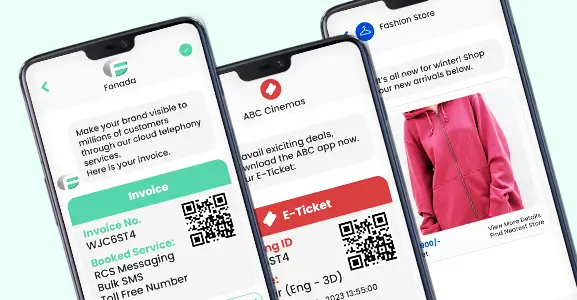SIP trunking is a digital approach to phone calls and communication that utilizes the internet instead of traditional phone lines. By employing Session Initiation Protocol (SIP), you can establish virtual phone lines, known as trunks, to connect with individuals using phone numbers via the Internet. These SIP trunks facilitate voice calls and support multimedia communication, integrating voice, video, and messaging services. As a result, SIP trunks are gradually replacing conventional analog and ISDN phone lines, and many countries are planning to phase out ISDN services.
This blog post will provide detailed insights on SIP trunking. So be glued with this write-up and clear all your doubts and queries about this topic.
How Does SIP Trunking Work?
Here’s a simple overview of how SIP trunking works:
Infrastructure
You need an IP-based private branch exchange (IP-PBX) or a compatible VoIP system to implement SIP trunking. This system manages voice calls, voicemail, and other telephony features.
Internet Connection
A reliable Internet connection is required to support SIP trunking. The IP-PBX connects to the Internet via a router or gateway.
Service Provider
You must choose a SIP trunking service provider. They will assign you a specific number of “channels” or concurrent call paths for SIP calling that your organization can use. These channels represent the maximum number of simultaneous calls your system can handle.
SIP Trunk Configuration
The IP-PBX is configured to connect to the SIP trunk provider’s servers. This involves specifying the appropriate settings such as the provider’s SIP server address, authentication credentials, codecs, and other parameters.
Call Setup
When someone initiates a call, the IP-PBX sends a signaling message to the SIP trunk provider’s server using the SIP protocol. The signaling message includes information about the call, such as the source and destination phone numbers.
Call Routing
The SIP trunk provider’s server processes the signaling message and determines how to route the call. This may involve routing the call to another SIP trunk, converting it to a traditional telephone line if necessary, or connecting it directly to the destination phone number.
Media Exchange
Once the call is set up, the actual voice media flows directly between the IP-PBX and the remote party. The media exchange uses Real-time Transport Protocol (RTP) for transmitting voice data.
Call Termination
When the call ends, the SIP trunk provider’s server receives a signal from the IP-PBX and terminates the call.
What Are The Applications Of SIP Trunking?
SIP (Session Initiation Protocol) trunking is a communication technology that enables the transmission of voice and multimedia sessions over the Internet. It has several applications across various industries.
Here are some common applications of SIP trunking:
Voice Over IP (VoIP) Services
SIP trunking allows businesses to transmit voice calls over IP networks, replacing traditional telephone lines. It provides a cost-effective and scalable solution for businesses to set up and manage their phone systems. SIP trunks can connect to IP-enabled private branch exchanges (PBX) or unified communications systems, enabling organizations to make and receive calls using their existing infrastructure.
Unified Communications (UC)
SIP technology supports unified communications by integrating different communication channels, such as voice, video, instant messaging, and presence. It allows businesses to unify communication tools, enhance collaboration, and improve productivity. With SIP trunking, organizations can seamlessly connect their UC platforms, such as Microsoft Teams or Cisco Unified Communications Manager, to the public switched telephone network (PSTN) and other external networks.
Remote And Mobile Workforce
By extending SIP trunks to remote locations, employees can access the same communication services as if they were in the office. This facilitates flexible work arrangements, enhances productivity, and reduces costs associated with traditional phone systems.
Disaster Recovery And Business Continuity
SIP trunking offers robust disaster recovery capabilities by providing alternative routes for communication in case of network failures or natural disasters. Businesses can reroute calls to backup locations or mobile devices, ensuring continuous communication with customers and partners during emergencies. SIP trunking also allows for quick and flexible scaling of communication resources based on demand, further enhancing business continuity.
Cost Savings
By consolidating voice and data traffic over a single network connection, businesses can eliminate the need for separate telephone lines. SIP trunks offer more flexibility, scalability, and competitive pricing models, enabling organizations to optimize their communication expenses.
Global Connectivity
Businesses can establish a local presence in multiple countries without physically setting up offices or infrastructure with SIP technology that allows businesses to use Virtual phone numbers. These feature benefits companies with a global customer base or distributed teams, simplifying communication and reducing international calling charges.
Contact Centers
SIP trunking is widely used in contact centers to efficiently handle large volumes of incoming and outgoing calls. It enables the integration of voice services with customer relationship management (CRM) systems, automatic call distribution (ACD), interactive voice response (IVR), and other contact center applications. This integration streamlines call routing, improves agent productivity, and enhances the overall customer experience.
How Is SIP Trunking Utilized?
The main role of SIP trunking is to replace PRI technology. PRI, or Primary Rate Interface, has been used for decades to deliver lines of voice and data using physical copper lines. Essentially, it’s a bundle of analog phone lines put together. PRI can be costly to maintain since the hardware is becoming outdated rather quickly.
With SIP trunking, this happens using VoIP technology. SIP also supports other data like instant messages and video conferencing.
SIP trunking is the right choice for anyone ready to move their business communication on a light budget.
We Can Use SIP Trunking For:
- Call setup, management, and teardown are handled using SIP trunking. It’s a flexible, reliable, and lightweight solution. This means you can focus on your business instead of the technicalities.
- SIP forms the basis for VoIP communications.
- SIP Trunking is used to provide VoIP connectivity through a PBX.
Difference Between SIP Trunk And PRI
PRI and SIP trunking are frequently compared as two ways to connect your phone system to the outside world. Now, let’s delve into the fundamental contrasts between SIP trunking and PRI
(Primary Rate Interface).
PRI (Primary Rate Interface)
- PRI relies on a conventional phone line for making calls.
- Each PRI circuit permits up to 23 simultaneous calls, necessitating an additional circuit for exceeding that capacity.
- Scaling can be challenging with PRI, leading to potential surges in IT maintenance costs.
- PRI suits companies with limited bandwidth for IP phones and restricted access to reliable fiber-optic networks.
SIP Trunking
- SIP trunking harnesses your internet connection for making calls.
- You can continually add phone lines and expand your call volume with adequate bandwidth.
- SIP trunking ensures high-quality service and includes redundancies to address emergencies.
- In most scenarios, SIP trunking emerges as the optimal choice.
- It brings cost savings, facilitates remote work, enables international calling, and offers seamless scalability.
- SIP trunking streamlines the management of your communications
Factors To Consider When Choosing A SIP Trunking Service
When selecting a SIP trunking service, it’s important to evaluate various features offered by different providers. Consider the following aspects before selecting your choice of a SIP trunk providers
Real-Time Data Accessibility
Verify the amount of real-time data provided by the SIP provider. Access to comprehensive information empowers better decision-making. Leading providers like Fonada offer advanced transcription and machine-learning tools that transform recordings into actionable insights.
Security Standards
Ensure that your chosen SIP trunking provider offers robust security measures and authentication protocols. Encryption should be employed to safeguard your phone calls and digital services effectively.
Number Management Capacity
If you plan to switch providers, ensure that the new SIP service provider allows easy porting of your existing phone numbers while facilitating the addition of new connections and numbers from a centralized platform.
Check Reliability
Reliable SIP trunking providers offer insights into call completion percentages and voice quality, enabling you to monitor and analyze call performance.
Interoperability
Consider the customization options the SIP trunking service provides to align with your specific business requirements. A reputable provider should offer flexibility in tailoring their services to integrate video conferencing, instant messaging, and other communication features as needed.
Conclusion
SIP trunking is a powerful communication solution that enables businesses to optimize their voice and data services while reducing costs. With SIP trunking, businesses can modernize their communication infrastructure, enhance productivity, improve customer experience, and stay ahead in today’s rapidly evolving digital landscape.
FAQs
SIP trunking offers several benefits, including
- Cost savings
- Scalability
- Flexibility
- Improved call quality
- Seamless integration with existing systems
- Ability to consolidate voice and data networks.
The different types of SIP trunking include
- On-premises SIP trunking
- Hosted SIP trunking
- Cloud-based SIP trunking
The number of channels in a SIP trunk is flexible and adjusts based on the number of active calls. It can expand or contract as needed to accommodate the call volume.
Yes, SIP trunking can be cloud-based. It leverages the internet to connect an organization’s phone system to the public switched telephone network (PSTN) using Session Initiation Protocol (SIP).

Dec 11, 2024
Top Contact Center Optimization Tools For 2024
“A thriving business knows how to fetch maximum output from limited resources by optimizing ca... Read More
Nov 13, 2024
What Is Brand Communication? CPaaS Role Explained
Did you ever wonder why some advertisements grab your attention instantly, while others do not? The... Read More
Nov 01, 2024
What Is Automated Messaging And How Does It Work?
Automated messaging or text automation empowers businesses and marketing professionals to connect wi... Read MoreLatest Updates
From Fonada
Industry Insights, Trends, Innovations, Updates, and Case Studies from Industry Experts
View
Customer
Reviews
Discover why our customers love us - read their authentic and heartfelt reviews!
View
Case
Studies
Explore real-life scenarios, offering analysis, and solutions to practical challenges
View
Convert Leads Into Sales With Fonada
Trusted CPaaS Solution Provider








